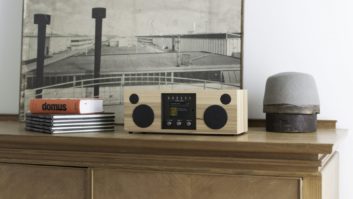Greg Muir of Cherry Creek Radio offers additional links regarding the new FAA Automated Flight Service System (AFSS). This service recently was taken over by Lockheed Martin with respect to tower light outage reports.
A useful link is the Lockheed Martin AFSS home page. You’ll find that at www.afss.com. To check the status of your local FSS office transfer into the new system, go to www.afss.com/transition.
It’s also possible to check your NOTAM status at the FAA PilotWeb site. This is the civilian version of the military DINs site Chris Tracy submitted earlier. The same procedure applies for entering the ICAO identifier for your area. Go to https://pilotweb.nas.faa.gov and click on Safety NOTAMs.
Of interest to our readers is an experience Greg had in May, shortly after Lockheed Martin began transferring the FSS system including the local FSS office over to their new hubs.
Greg had a tower light outage and tried to report it by dialing the local FSS number. The phone rang with no answer.
Lockheed Martin and the FAA apparently forgot to forward the lines and there still hadn’t been any formal notification of the new AFSS reporting number. After four hours of making phone calls in the middle of the night, Greg found an overnight emergency aircraft mechanic at a local FBO who had a number to call. The number connected Greg to the Atlanta hub who eventually directed him to the Fort Worth hub (still the wrong location) who took the information.
The report apparently made its way to the (proper) Prescott, Ariz., hub because the NOTAM was finally posted about an hour later — uncustomary given the normal minute or so when reports were filed locally.
Greg’s main worry was that this involved a top beacon outage on a 500-foot tower directly in line with, and a few miles ahead of, a commonly used runway approach at the local international airport.
During the time he was trying to contact the FAA, Greg had several scenarios running through his mind on how he could explain things to the feds if an incident were to happen.
But this was only a small part of the story. You can read about how “smoothly” the initial transition was at the Aircraft Owners and Pilots Association Web site, www.aopa.org, and type “FSS problems” into the Search field. The organization’s ongoing problem blog can be found there too, under the AFSS link.
After completing his report to the FAA, Greg writes that his fur was standing up. He contacted Phil Boyer, president of the AOPA, and found him to be receptive. Boyer planned a meeting with Marion Blakey, administrator of the FAA, and said he would present this issue to her.
Not knowing how much of an impact it had, Greg still feels his interaction helped bridge the missing communications link regarding calls to the new AFSS system.
Obviously not all engineers have yet experienced tower light outages, and hopefully they will be forwarded to the proper hubs when they do need to call. However, it is worth the effort to continue to spread the new contact information by e-mail, in conversations, and through local organizations like SBE. We agree and thank Greg for sharing this information with Workbench readers.
(click thumbnail)Fig. 1: Use an industrial-size bucket of UGL Drylok to keep block buildings dry
* * *
Fig. 1 isn’t pretty, but the bucket of UGL Drylok brand masonry waterproofer is worth its weight in gold when used to protect block transmitter buildings from moisture.
The compound is oil- or latex-based and applies easily; it effectively blocks the absorption of moisture. Entercom Scranton’s Lamar Smith used the compound both the inside and outside a newly constructed block transmitter building to keep things dry.
The outside of the building is shown in Fig. 2, along with a vandal-resistant security light with motion detector. The motion detector triggers when the engineer drives his vehicle up to the building, eliminating fumbling for keys in the dark.
Another benefit of using DryLok on interior walls: the inside of the building is not only dry but clean.
(click thumbnail)
* * *
Gary Saber, a projects engineer based in Raleigh, N.C., comments about the spring suspension technique for hanging speakers in a studio.
Gary offers another alternative: aircraft cable. It’s almost invisible and has very low mass; low frequencies cannot travel through it into the studio structure. Over the past 10 years, Gary has used aircraft cable for all of his studio buildouts. The 1/16-inch-diameter cable is rated at 94 pounds, so two pieces would support 188 pounds. Most modern monitor speakers weigh in at 40 to 50 pounds each.
The cable can be painted to match surroundings, and if done properly, the speakers seem to float because it’s hard to see the cable. He is using this speaker hanging technique on the Good Karma studio buildout on which he is working. Pictures to follow!
* * *
(click thumbnail)Fig. 2: Adding a security light with a motion sensor not only deters vandalism, but lights the way for late night entryGary Kline of Cumulus always finds great tips from among his cadre of engineers.
In this day of transmitter site theft, a suggestion from Greg Davis, chief for the Cumulus Beaumont/Houston cluster, is unique. Greg relates that the foreman of the tower crew said the only successful way to prevent copper ground theft is to cover it in roofing tar. The suggestion is to cover every bit of copper you can access, all the way to the tower.
Yes, the idea sounds strange; but consider that roofing tar is cheap and easy to apply. It also partially masks the copper. Perhaps the best benefit is that the tar deems the copper almost useless to the thief. It would take more time to get the tar off than the copper would be worth.
Of course nothing is foolproof, but this is the best idea yet.
Greg writes that he’ll try the “tar trick” the next ground system he installs. Meantime, Greg ponders how the tar could be used to cover air conditioners, another big theft problem.















